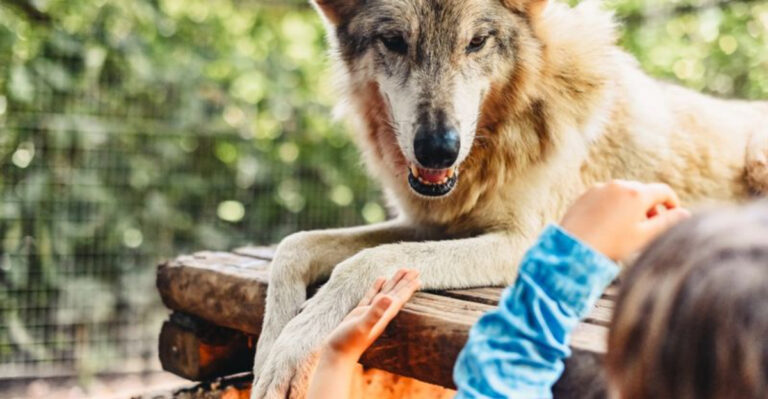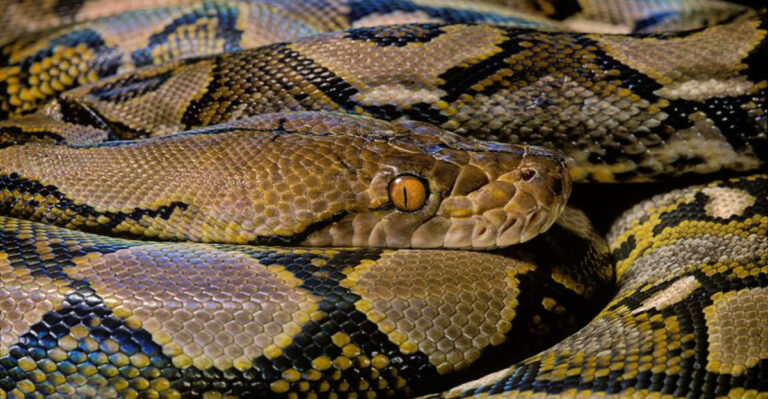What’s On The Menu For Swallowtail Caterpillars?
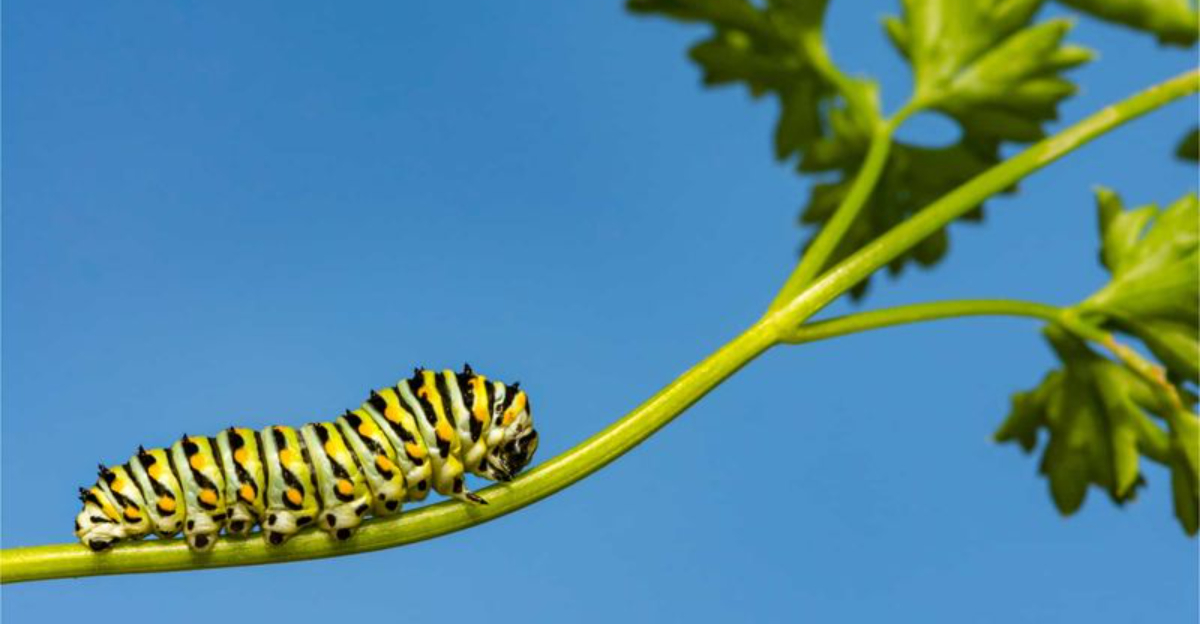
Ever wondered what those striking swallowtail caterpillars munch on before transforming into beautiful butterflies? These hungry critters have specific dining preferences that directly impact their survival and development.
Understanding their menu helps butterfly enthusiasts create the perfect habitat to attract these magnificent insects and support their lifecycle.
1. Favorite Host Plants Of Swallowtail Caterpillars
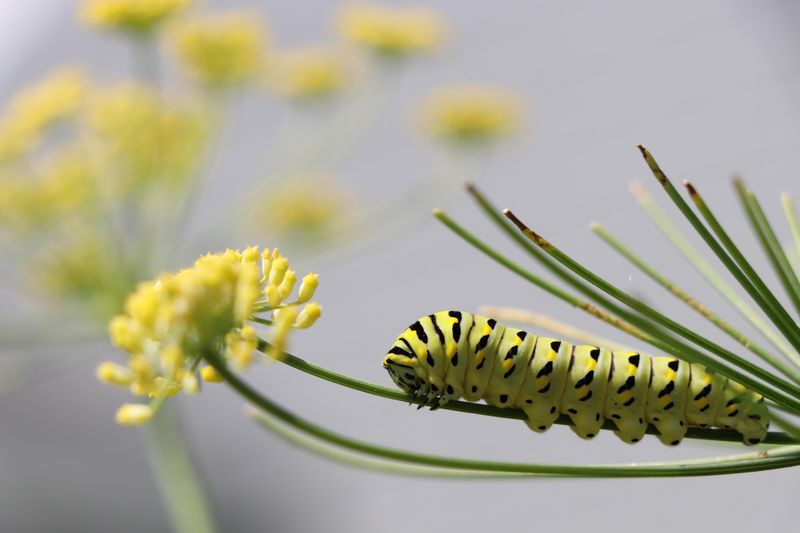
Each swallowtail species evolved alongside specific plant families, creating powerful feeding preferences that last generations. Black swallowtails gravitate toward parsley, dill, fennel, and other members of the carrot family (Apiaceae).
Eastern tiger swallowtails prefer trees like wild cherry, tulip tree, and ash. The giant swallowtail caterpillars – resembling bird droppings for camouflage – feast on citrus trees and prickly ash.
Spicebush swallowtails seek out their namesake spicebush along with sassafras trees. These relationships developed over thousands of years of co-evolution.
2. The Role Of Leaves In Swallowtail Nutrition
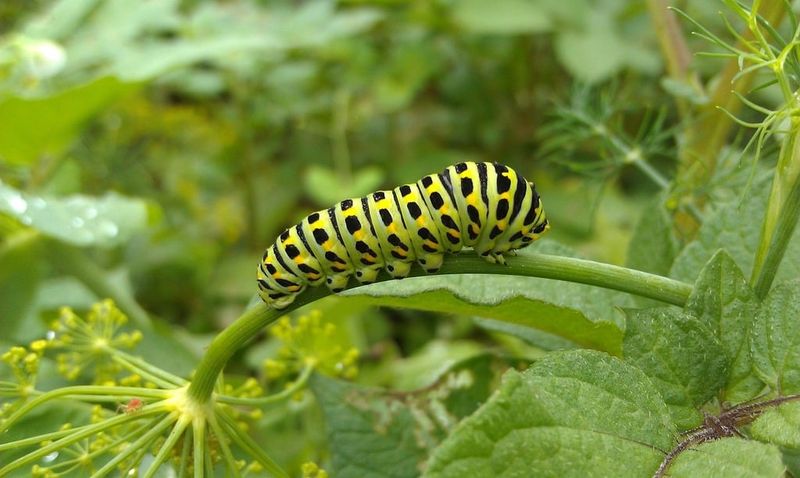
Leaves provide more than just calories for growing swallowtail caterpillars – they’re complete nutritional packages. Rich in proteins, carbohydrates and essential minerals, these green powerhouses fuel the incredible transformation from caterpillar to butterfly.
Many caterpillars specifically target young, tender leaves which contain higher nitrogen levels crucial for building body tissues. Some species even incorporate plant toxins from their food into their own bodies as a defense mechanism.
The moisture content in leaves also helps caterpillars stay hydrated. A single hungry swallowtail caterpillar can consume surprising amounts of foliage during its growing stages!
3. How Swallowtail Caterpillars Choose Their Food
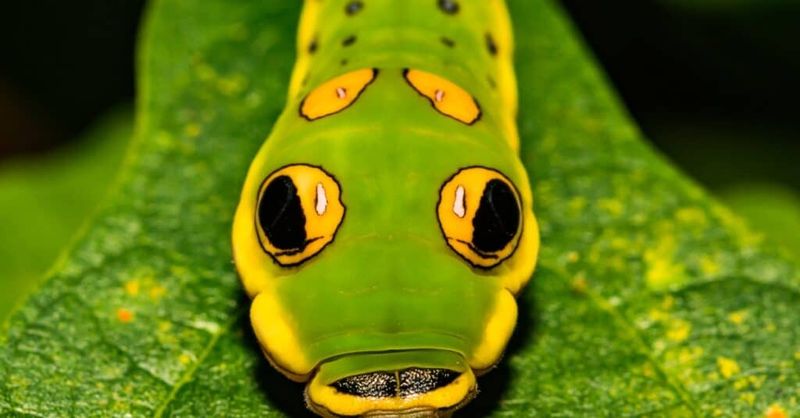
Female swallowtail butterflies make the first crucial food choice by laying eggs directly on appropriate host plants. Their specialized feet contain chemical sensors that identify the right plants through touch – a remarkable example of natural precision!
Once hatched, baby caterpillars rely on instinct and sensory cues. Tiny sensory hairs detect plant chemicals while specialized mouthparts sample potential food.
Caterpillars often reject plants that aren’t part of their natural diet. This pickiness isn’t just preference – it’s survival. Eating the wrong plant could mean consuming toxic compounds their bodies can’t process or missing essential nutrients needed for proper development.
4. Common Garden Plants Eaten By Swallowtail Larvae
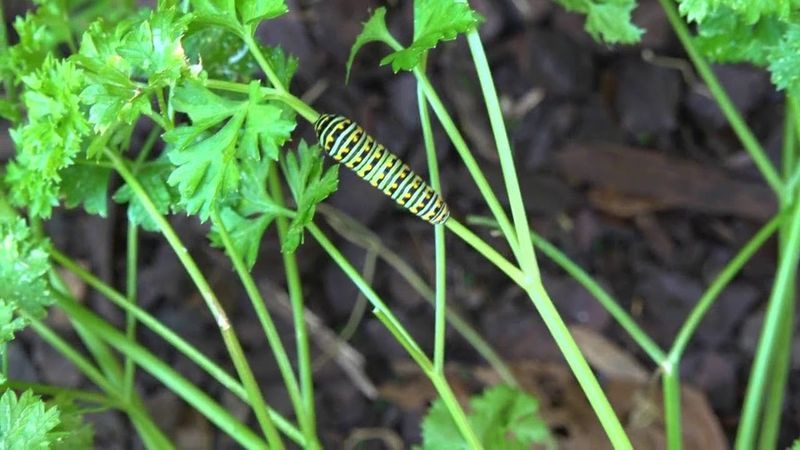
Your garden might already host the perfect swallowtail buffet! Dill, parsley, and fennel top the menu for black swallowtails – making herb gardens natural caterpillar nurseries. Plant extra if you want to share your harvest with these hungry visitors!
Flowering rue attracts giant swallowtails, while pawpaw trees serve as the exclusive dining spot for zebra swallowtails. Eastern tiger swallowtails happily munch on tulip trees, wild cherry, and sweetbay magnolia.
Many gardeners deliberately plant extra caterpillar food plants, accepting some leaf damage as a small price for supporting these magnificent butterflies. The reward? Watching the entire lifecycle unfold right in your backyard!
5. Why Citrus Trees Are A Popular Choice
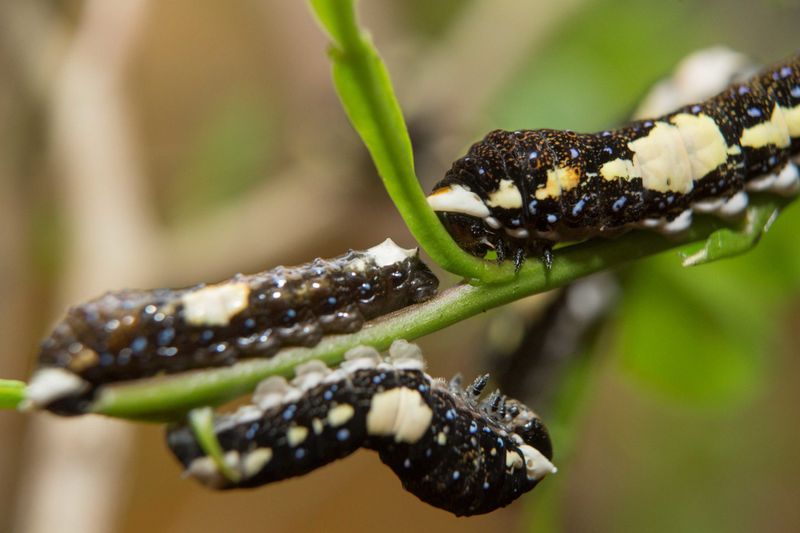
Giant swallowtail caterpillars have earned the nickname “orange dogs” because of their love for citrus trees. Lemon, lime, orange, and grapefruit trees provide both food and shelter for these remarkable insects.
The relationship goes beyond simple feeding – citrus leaves contain essential oils and compounds that these caterpillars have specially adapted to process. What would be toxic to other species becomes nutrition for these specialized feeders!
Home gardeners with citrus trees might spot these unusual caterpillars disguised as bird droppings – a clever camouflage strategy. Commercial growers sometimes consider them pests, but the minimal damage they cause rarely affects fruit production in healthy trees.
6. Feeding Habits Throughout The Caterpillar Stages
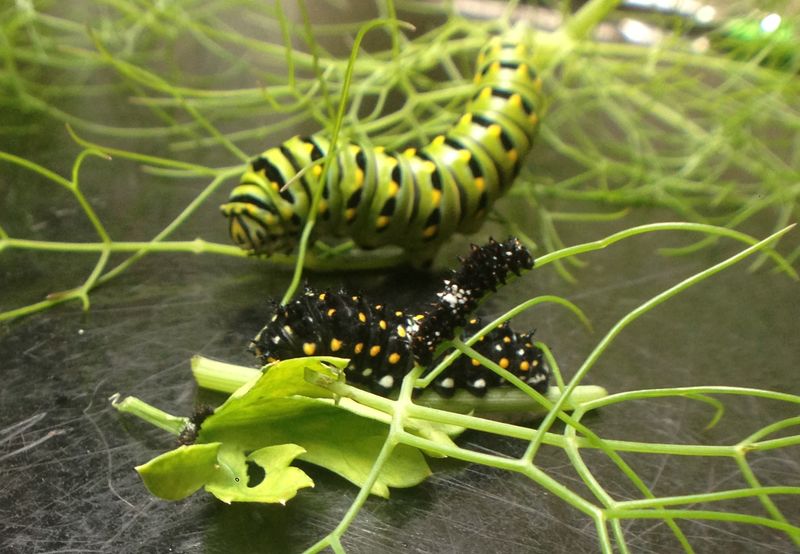
Newly hatched swallowtail caterpillars start with delicate nibbling, often eating their own eggshells for extra nutrition! These tiny first-instar caterpillars create distinctive feeding patterns, making small holes or eating along leaf edges.
As they grow through five developmental stages (instars), their appetite increases dramatically. Mid-stage caterpillars consume moderate amounts of leaf tissue, while final-stage caterpillars become eating machines, sometimes devouring entire leaves in a single day.
Just before pupation, a fascinating change occurs – caterpillars stop eating completely. Their bodies undergo internal reorganization as they prepare for the remarkable transformation into butterflies. This feeding pause signals they’ve stored enough energy for metamorphosis.
7. Nutritional Needs For Growth And Development
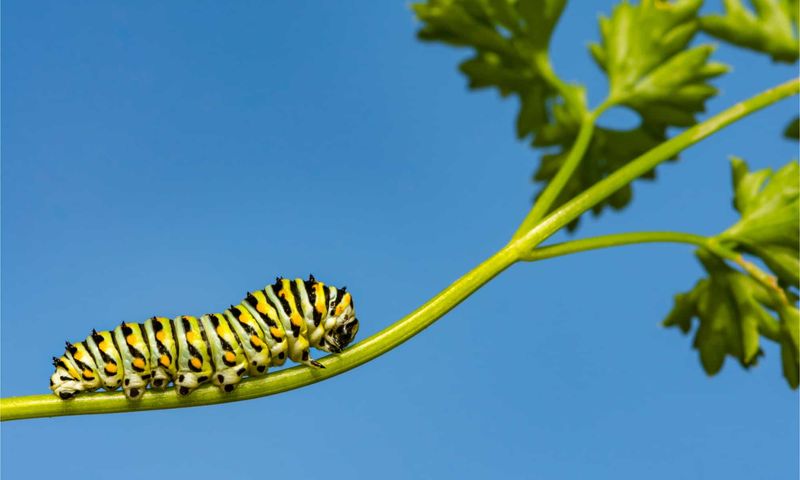
Swallowtail caterpillars are nature’s remarkable protein processors. They convert plant matter into body tissues at an astonishing rate, increasing their body mass by thousands of percent in just weeks!
Nitrogen compounds from leaves help build muscles and internal organs. Carbohydrates provide energy for constant movement and metabolism. Minerals like potassium, calcium, and magnesium support nervous system function and the formation of their exoskeleton.
Water content in leaves is equally crucial – caterpillars consist of approximately 80% water. This explains why wilted plants make poor food sources. A caterpillar’s diet directly influences its development speed, final size, and even the brightness of the resulting butterfly’s wing colors!
8. Differences In Diet Among Swallowtail Species
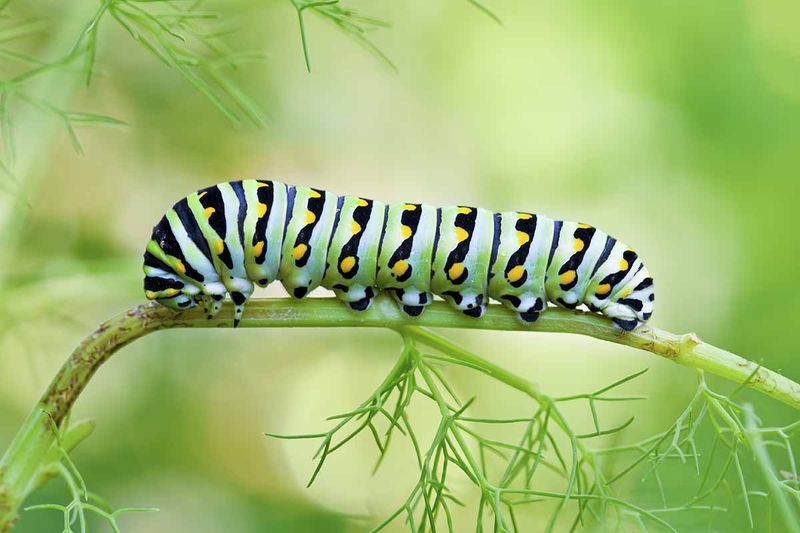
The swallowtail family showcases remarkable dietary specialization across its many species. Anise swallowtails primarily feed on fennel and other aromatic plants in the western United States, while their eastern cousins, black swallowtails, enjoy a broader menu including dill, parsley, and Queen Anne’s lace.
Pipevine swallowtails demonstrate extreme specialization – their caterpillars eat only toxic Aristolochia plants, incorporating the toxins into their bodies as defense. The majestic Palamedes swallowtail feeds exclusively on bay trees in southeastern swamps.
This specialization reduces competition between species sharing the same habitat. It also explains why conservation efforts must protect diverse plant communities – each swallowtail species needs its specific menu items to survive!
9. How Plant Toxicity Affects Swallowtail Caterpillars
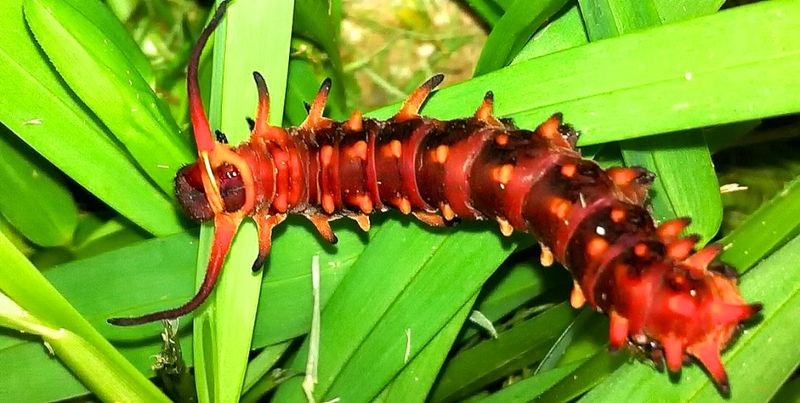
Many swallowtail caterpillars have evolved remarkable adaptations to handle plant toxins that would kill other insects. The pipevine swallowtail munches on poisonous Aristolochia plants, storing toxins in its tissues to become unpalatable to predators.
Some species have specialized digestive systems that neutralize harmful compounds. Others actually benefit from consuming toxins – the chemicals become part of their defense strategy, making the caterpillars (and later the butterflies) taste terrible to birds and other predators.
This chemical relationship is an evolutionary arms race. Plants produce toxins to discourage feeding, while caterpillars develop countermeasures. The toxin tolerance explains why many swallowtails are so particular about their host plants – they’ve invested in specific adaptations for particular plant chemicals.
10. The Impact Of Habitat On Available Food Sources

Habitat loss threatens swallowtail caterpillars by eliminating their specialized food plants. Forests cleared for development often remove tulip trees and wild cherry – staples for eastern tiger swallowtails. Wetland drainage eliminates spicebush habitats essential for spicebush swallowtails.
Urban environments can still support these butterflies if the right plants are included in landscaping. Even small butterfly gardens with appropriate host plants create vital habitat islands in developed areas.
Climate change adds another challenge by shifting plant growing ranges. Some caterpillar host plants may no longer thrive in their historical locations, forcing butterfly populations to adapt or decline.
Conservation efforts increasingly focus on preserving diverse native plant communities that include these critical caterpillar food sources.
11. Swallowtail Caterpillars And Their Relationship With Host Plants
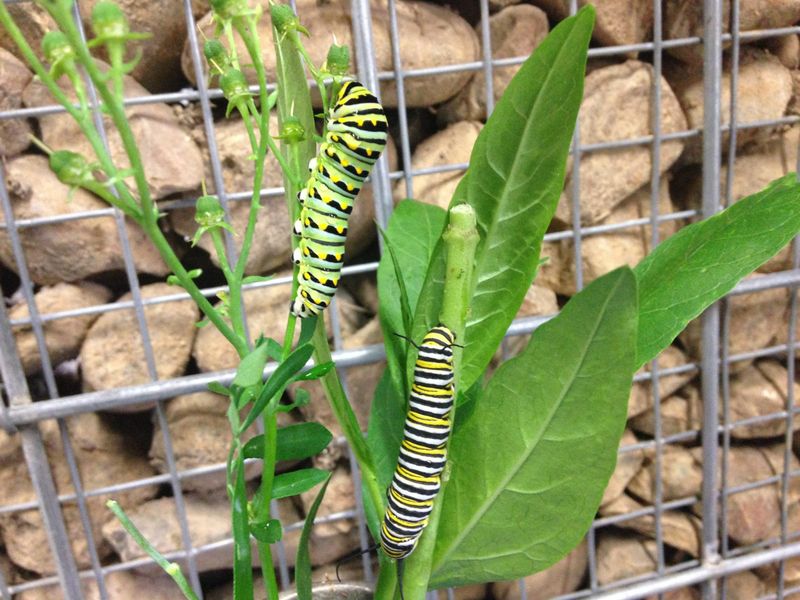
The dance between swallowtail caterpillars and their host plants goes beyond simple eating – it’s a fascinating evolutionary partnership. Female butterflies use specialized sensors on their feet to “taste” leaves before laying eggs, ensuring their offspring have proper food.
Many host plants have developed chemical defenses against general herbivores. Swallowtails counter with specialized enzymes that detoxify these compounds, allowing them exclusive access to these food sources.
Some plants actually benefit from moderate caterpillar feeding! The pruning effect can stimulate new growth and increase flowering.
This balance – where caterpillars consume enough to survive without killing their host plants – represents millions of years of co-evolution, resulting in the remarkable specialization we see today.
12. Tips For Growing Plants That Attract Swallowtail Caterpillars
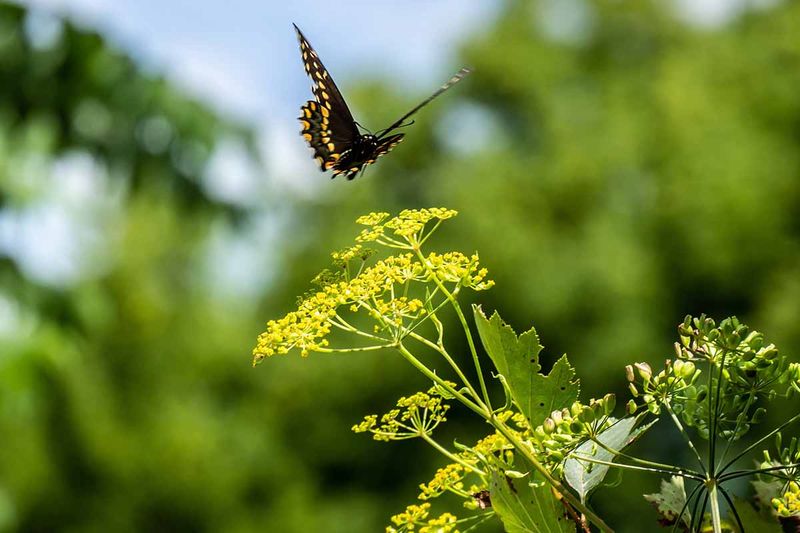
Creating a swallowtail nursery starts with planting their favorite foods in sunny locations. For black swallowtails, include dill, fennel, parsley and rue – planting extras ensures enough for both your kitchen and hungry caterpillars!
Giant swallowtails appreciate citrus trees or prickly ash. Eastern tiger swallowtails seek tulip trees, wild cherry, and sweetbay magnolia, while spicebush swallowtails need their namesake spicebush or sassafras.
Avoid pesticides completely – even organic options can harm caterpillars. Accept some leaf damage as a sign of success!
Provide water sources and flat stones for basking butterflies. Consider adding nectar plants like zinnias, coneflowers, and butterfly bush to nourish the adult butterflies after they emerge from chrysalides.

